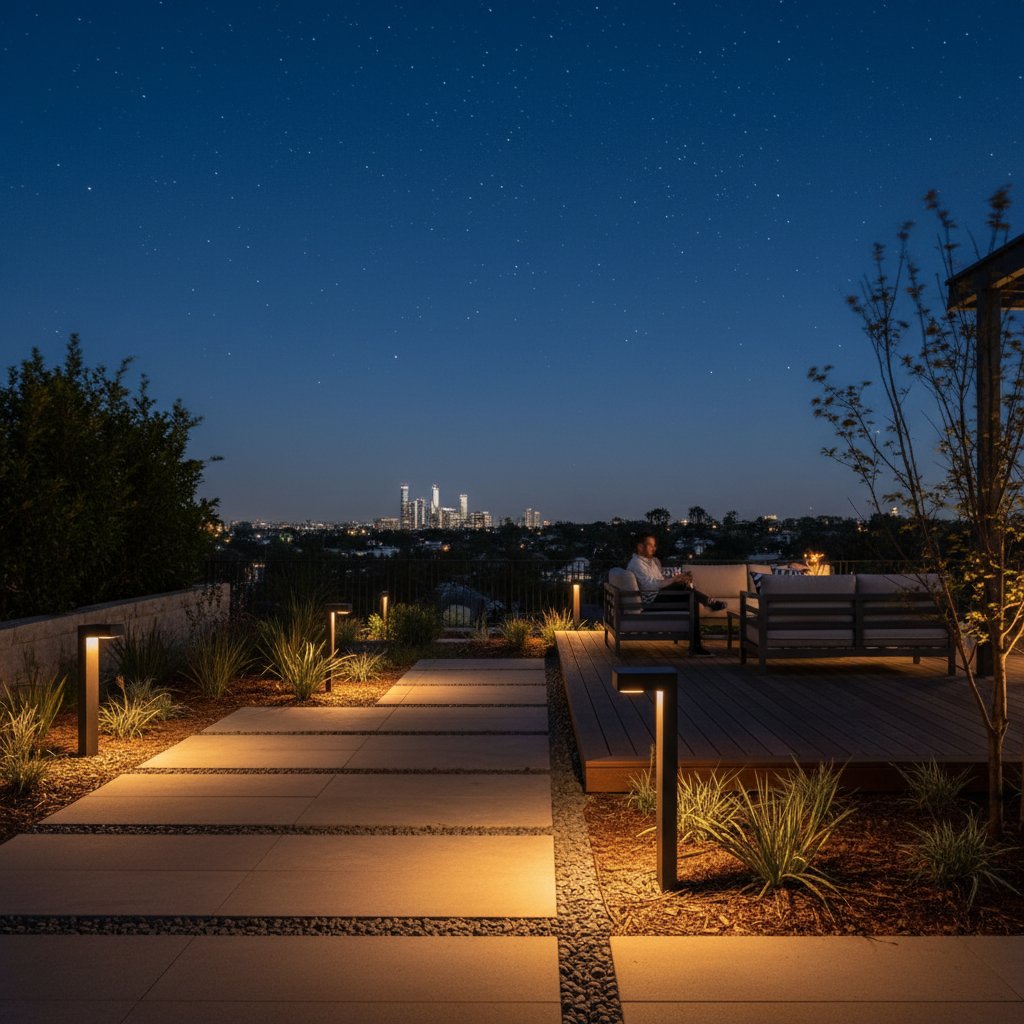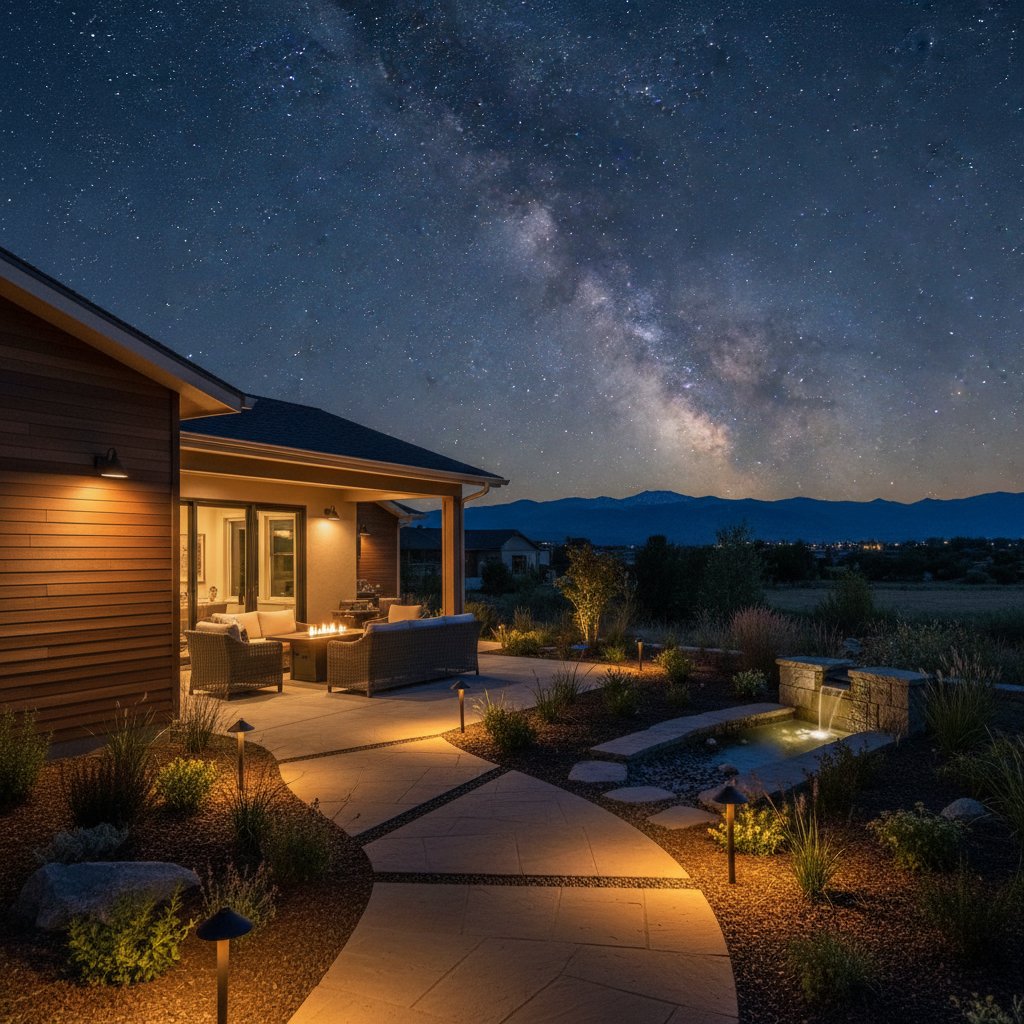2025 Dark Sky Laws: Illuminate Your Yard Responsibly
Outdoor lighting enhances home safety and appeal, yet it often contributes to light pollution that disrupts wildlife, neighbors, and human rest cycles. New dark sky laws nationwide are guiding homeowners toward installations that minimize glare, energy waste, and sky glow. These measures allow you to maintain attractive outdoor spaces while adhering to regulations. Grasping the implications of these laws enables informed planning for lighting improvements that align with legal standards and aesthetic goals.
Understanding Dark Sky Laws and Their Importance
Dark sky laws consist of local or regional rules aimed at curbing light pollution. They promote outdoor lighting that directs illumination downward, preventing upward spill. The primary objectives include safeguarding night sky visibility, conserving energy, and preserving habitats for light-sensitive species.
Upward or sideways light scatters in the atmosphere, producing a veil that obscures stars. Such illumination disorients migratory birds, insects, and nocturnal creatures dependent on natural light cues for orientation. Compliance with these standards fosters a balanced nighttime ecosystem and yields reductions in electricity consumption.
Implications for Homeowners
Existing landscape or security lights may require evaluation against updated criteria. Dark sky regulations typically emphasize three elements:
-
Fixture Design
Select fully shielded models that prevent upward light escape. Prioritize products labeled as full cut-off or shielded during purchases. -
Brightness Control
Measure output in lumens and match it to the purpose. Pathway illumination suits 100 to 200 lumens, whereas driveways or security zones benefit from 500 to 1000 lumens. Lower settings diminish glare and electricity demands. -
Color Temperature Selection
Opt for warm white bulbs rated at 2700K to 3000K. Blue-toned cooler lights (above 4000K) amplify atmospheric scattering and interfere with animal rhythms.
Adhering to these principles achieves regulatory alignment in most jurisdictions. The approach also cultivates a serene yard ambiance.
Selecting Compliant Outdoor Fixtures
Prioritize light direction when evaluating fixtures; shielding outweighs ornamental aspects. Recommended options include:
- Downward-oriented sconces or pendants for walls and entrances
- Shielded bollards for garden paths
- Recessed units for decks, stairs, or eaves
- Hooded spotlights for targeted landscape highlighting
Steer clear of exposed-bulb designs or those permitting upward emission. Decorative lanterns qualify if equipped with internal shields or diffusing frosted covers that channel light earthward.
Achieving Energy Efficiency and Savings
Dark sky-approved fixtures frequently incorporate LED technology, offering superior efficiency and durability. Standard LED outdoor units range from 30 to 100 dollars based on dimensions and build quality. Expect up to 75 percent savings over incandescent alternatives in operational costs.
Incorporate intelligent controls for optimization. Timers, dimmers, and motion detectors activate lights solely as required. Motion-based security setups, for instance, curb continuous operation and mitigate persistent yard glare. These features accumulate savings on utilities and prolong equipment longevity.
Practical Installation and Upkeep Strategies
Dark sky lighting retrofits demand minimal structural changes. Weekend projects suffice for many, using everyday tools. Upon replacing legacy fixtures, verify:
- Mounting Elevation: Position units low to focus on intended zones without broad dispersion.
- Beam Orientation: Direct illumination downward, below eye level and horizon.
- Placement Intervals: Deploy multiple low-output lights rather than isolated high-intensity sources for coverage.
Regular maintenance sustains efficacy. Clean lenses to prevent scatter from accumulated grime. Swap dimming or flickering bulbs promptly to ensure uniform output.
Harmonizing Style with Regulatory Standards
Compliance need not compromise visual appeal. Contemporary designs integrate elegant finishes with precise optics. Finishes in copper, bronze, or matte black harmonize with diverse landscapes.
Employ layered illumination for dimension without overload. Integrate path guides, subtle tree uplights, and feature accents. This method accentuates property highlights while respecting limits.
Broader Environmental Advantages
Dark sky practices extend beyond ordinances to ecosystem restoration. Darkness sustains pollinators like moths and beetles in foraging and breeding. Artificial excess disrupts these processes, threatening diversity.
For people, diminished pollution yields sharper stellar views and improved rest. Darkness stimulates melatonin, aiding circadian regulation. Limiting glare benefits communal health.
Navigating Local Ordinances
Regulations differ by locale; urban zones may target residences, while protected areas impose rigor near natural sites. Consult municipal planning or building portals for specifics prior to installations.
Common mandates cover lumen caps, elevations, and operational durations. Requirements often mandate sensors or timers for select applications. Document fixture and bulb details to simplify audits or modifications.
Budgeting for Lighting Enhancements
For multi-fixture overhauls, outline expenses by zone:
- Path and stair units: 50 to 150 dollars each
- Wall and entry models: 75 to 200 dollars each
- Accent or spotlight variants: 100 to 250 dollars each
- Control devices like timers: 25 to 100 dollars each
Professional electrical work for intricate setups adds 300 to 600 dollars, varying by region. Simple swaps often qualify as self-managed tasks.
Implementing Your Lighting Plan
Transitioning to compliant systems modernizes yards sustainably. Begin with a nocturnal property survey to identify spill sources. Address those areas initially by retrofitting with warm, shielded options and usage-limiting controls.
Incremental adjustments yield substantial gains. Energy conservation, upkeep reduction, and natural ambiance follow. Your space gains refinement and warmth, respecting neighbors and celestial vistas. Thoughtful execution positions you for enduring regulatory harmony.



